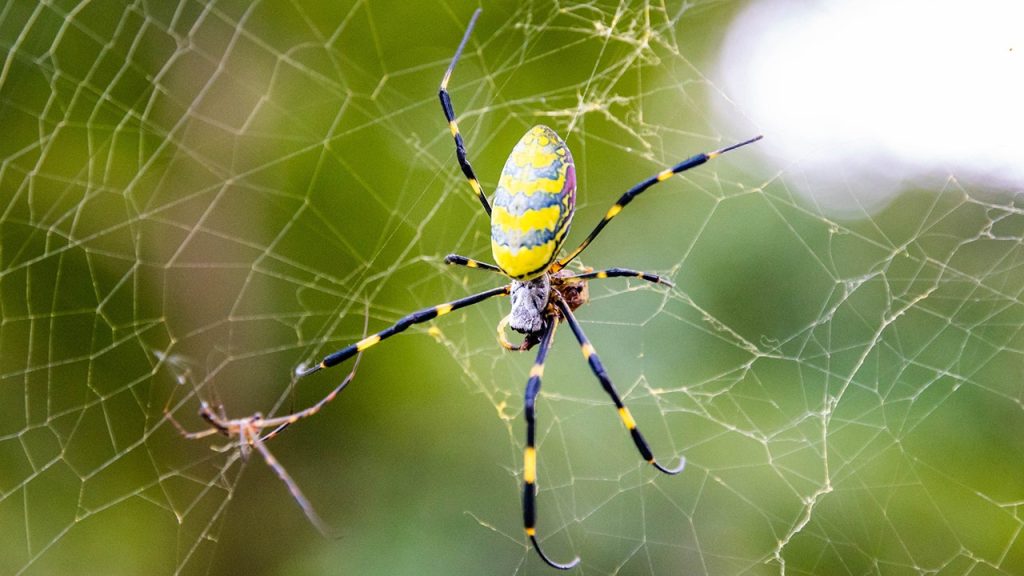A palm-sized, brightly colored invasive species known as the Joro spider has been spotted in Massachusetts, with a recent sighting in Boston’s historic Beacon Hill neighborhood. This is the first sighting of a Joro spider in the state of Massachusetts. The spider was identified by resident Joe Schifferdecker, who noticed the distinctive bright-yellow bands on its black legs. Scientists had previously warned that the invasive species could move from the South into the Northeast, and the Boston sighting marks the northernmost appearance of the Joro spider.
Despite the concerns about the spread of the Joro spider, spider experts advise that there is no need to fear this East Asian arthropod. The Joro spider is known for its elaborate silk webs and its bright yellow and black coloring. It belongs to a group of spiders called orb-weavers, named for their wheel-shaped webs. The females can grow to be three to six inches long when fully stretched out, making them double the size of males. However, they pose no threat to humans and are usually spotted between August and September. David Nelsen, a professor of biology who has studied the Joro spider’s range, believes that public hysteria may be fueled by the spider’s unique appearance and potential danger.
Despite the Joro spider’s growing range in the United States over the past decade, experts emphasize that it is not the invasive species that poses the greatest threat. While the Joro spider may capture attention for its striking features and elaborate webs, it is not a cause for alarm. The spider’s appearance in Boston’s Beacon Hill neighborhood highlights its ability to adapt and spread to new areas. People are often fascinated by unusual and potentially dangerous creatures, but experts stress that the Joro spider is not a danger to humans and should not be a cause for concern. As the spider continues to expand its range, it is important to educate the public about its characteristics and dispel any misconceptions or fears.
The Joro spider’s presence in Massachusetts raises questions about the impact of invasive species on local ecosystems and biodiversity. While the Joro spider may not pose a direct threat to humans, its introduction to new environments can have unintended consequences for native species. Invasive species can outcompete native species for resources, disrupt food chains, and alter ecosystems. By studying the spread of invasive species like the Joro spider, scientists can gain insights into the mechanisms of species colonization and potential methods for managing and mitigating their impact. Public awareness and education are crucial for identifying and monitoring invasive species and implementing strategies for their control.
The Joro spider’s spread in the United States highlights the complex interactions between human activities, environmental changes, and species distribution. As the spider continues to adapt to new environments and expand its range, research efforts are needed to understand its behavior, ecology, and potential impacts on ecosystems. By studying the spread of invasive species like the Joro spider, scientists can develop strategies for monitoring and managing their presence, protecting native species, and preserving biodiversity. Public engagement and awareness campaigns can also help raise awareness about the importance of preventing the introduction and spread of invasive species, and the need for sustainable conservation practices. Together, scientists, policymakers, and the public can work towards protecting ecosystems and maintaining ecological balance in the face of invasive species and other environmental challenges.


